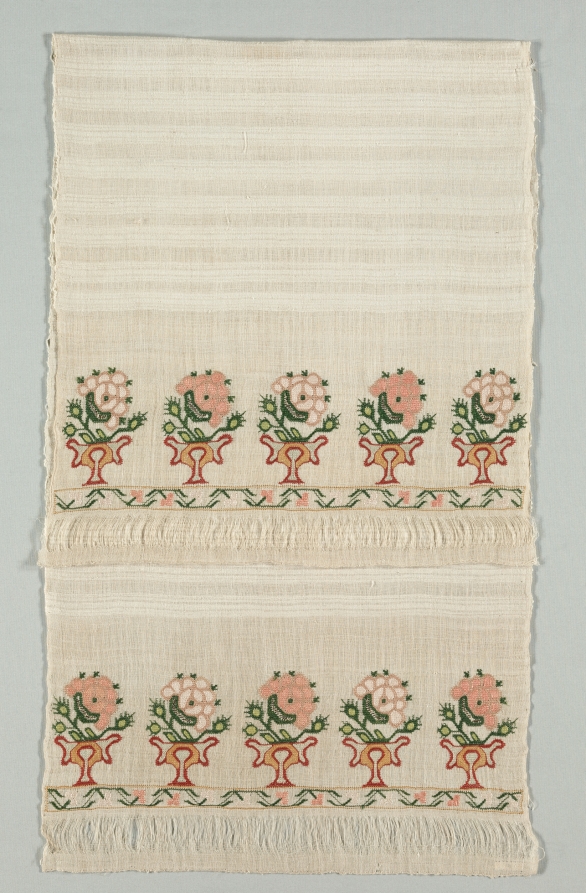
Amanda Phillips (DPhil, Oxon) is Associate Professor of Art History, specialising in the art and material culture of the Islamic World. She researches and writes on the Ottoman Empire and its craft traditions, as well on the histories of consumption and technology. She recently spent a year in Turkey as a Fulbright Senior Researcher, based at Koç University's Department of Archaeology and History of Art. In the Unıversity of Virginia's Department of Art, Amanda teaches at both graduate and undergraduate levels -- her survey, Arts of the Islamic World is offered every spring on Tuesdays and Thursdays. She is currently Director of Graduate Studies in Art and Architectural History.

Featured Object. Linen was used for towels and other types of domestic textiles in the Ottoman Empire. Flax was grown near rivers in western Anatolia and in the Pontus, and spun into thread in those places as well as in Egypt. Records also show that city-dwellers grew small amounts of flax, judging by combs, and bundles and seeds of flax found in inventory lists for the garden suburb of Üsküdar, on the Asian side of the Bosporus. The towel is in a tabby structure, according to colleagues at the Cleveland Museum. Weavers inserted a relatively thicker weft in bands up and down its length, perhaps to create a fabric that would absorb better. They left the spaces at each end empty, though, in order that they could be decorated with colourful embroidered motifs--in this case pots of flowers. The embroiderers used silk, but also a metal tinsel or lamella, which they pushed between the threads and then flattened into shape. Its relatively small size suggests it might have been a hand towel, but is does not show many signs of wear.
All information about the object from the Cleveland Museum of Art, inventory no. 1956.683
Linen, tabby-weave; silk and metal embroidery. Ottoman Empire, probably nineteenth century, 129 x 49.9 cm.